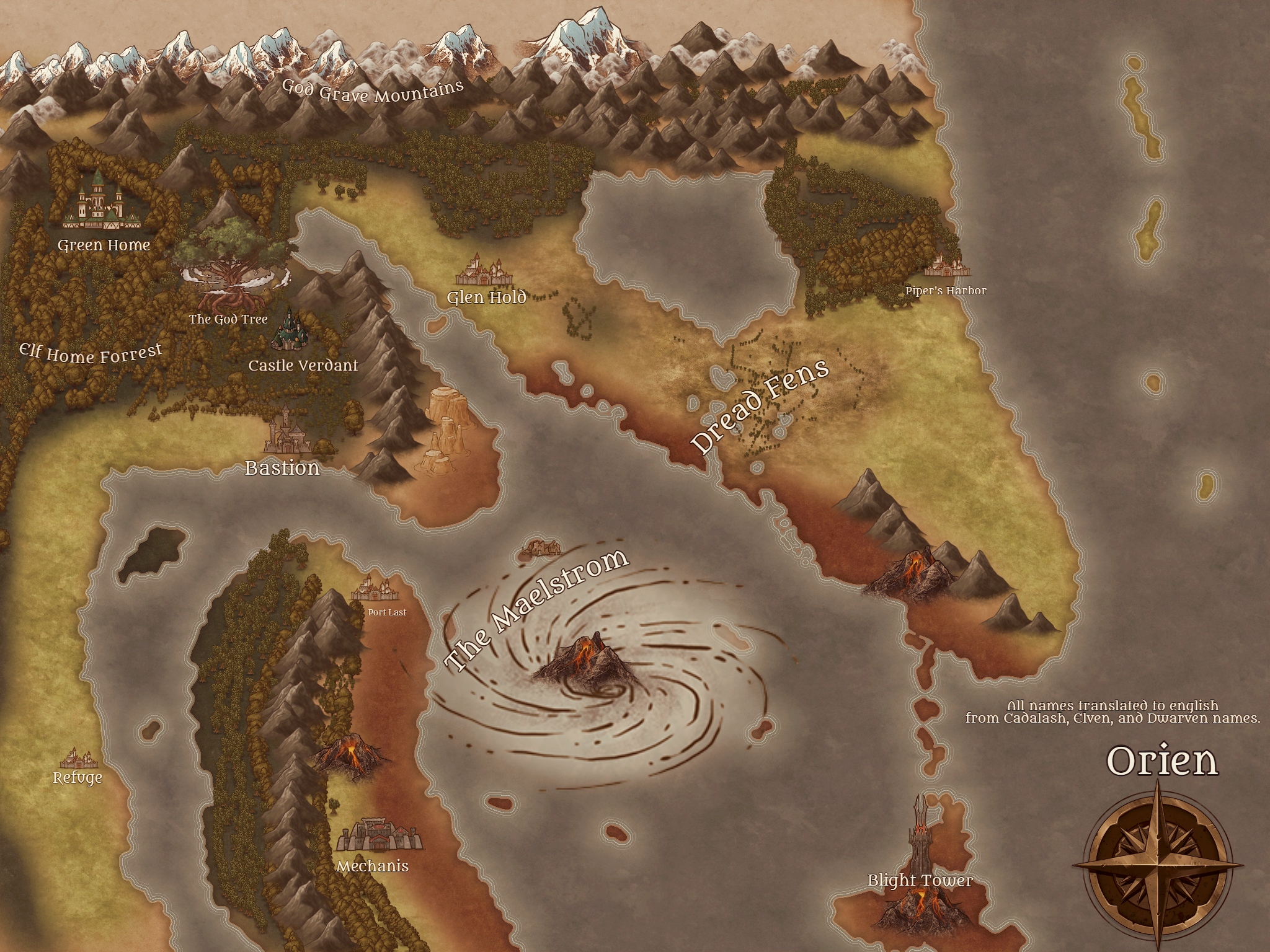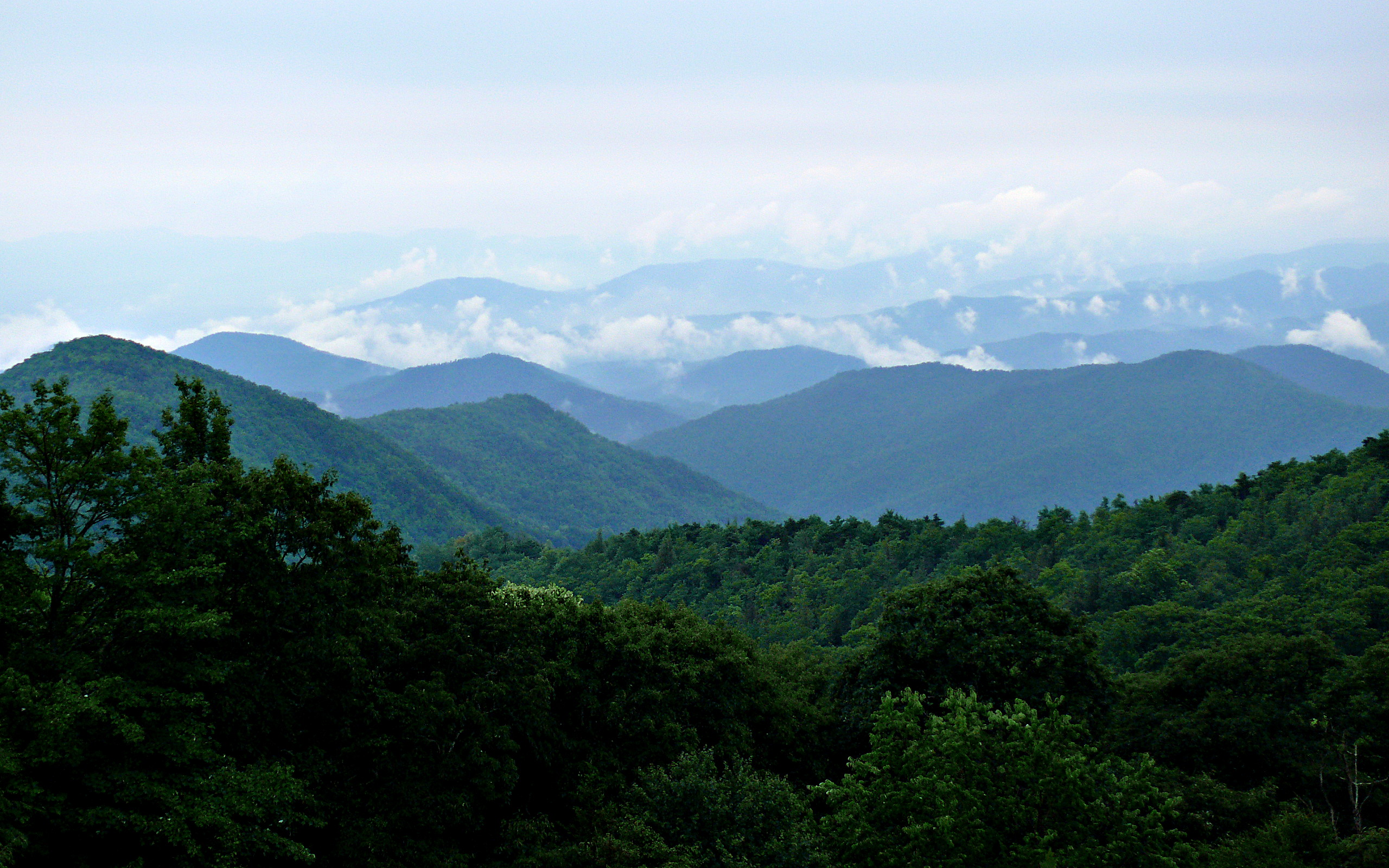Alright, this is part two of my review of the official settings of D&D. The first one I covered Greyhawk, Mystara Forgotten Realms, and Dragonlance. The first three were developed as home campaign settings that were elaborated on to become settings. The fourth was made as adventures and was revealed over time. All of these were published when D&D was produced by TSR. Greyhawk was the only one directly influenced by Gygax and, arguably, could be his vision of what D&D settings should be. The rest were mostly developed by other people and sort of reflected range of what you could do with the game.
That said, all of the ones in the 70’s and 80’s at least started with certain commonalities. They all carried a flavor based on western European fantasy. You had Merlin-like wizards, knights, kings, peasents, elves, dwarves, halflings and all the other tropes one associates with western fantasy. While the sword and sorcery genre was what Gygax pointed to as his influences, it is hard to ignore how many of these tropes were influenced by the works of Tolkien. Any proper Tolkienian will tell you the elves and wizards in D&D don’t really resemble the Middle Earth versions. Their presence are elemental to the conception of the fantasy world. Simply put, Tolkien is the gold standard of world building up to that point, so anyone following him will have some similarities.
In the 90’s, and the post-Gygax era, TSR began to experiment more with their settings. They didn’t completely lose those elements and they continue today, but the willingness to experiment away from the classic western fantasy/Tolkien model is certainly there.
They also, more or less, stop having Sub-settings the way they did in other settings. The design of the worlds becomes more top down and less haphazard. There was no Kara-Tur in Ed Greenwood’s original outline of Forgotten Realms. There was no Al-Qadim. Those were added later to incorporate them into an existing setting. Similar expansions happened to Mystara and Dragonlance. They may elaborate on the settings of the 90’s, but the sharp tonally different sub-settings are gone, well until this year… maybe.
Dark Sun
Never has there been a more utterly metal setting in D&D. It is so metal that they don’t even have metal. Originally conceived of as post apocalyptic “War World” setting, this setting became one of the more distinctive settings in D&D. The setting pulled more from the John Carter stories than Tolkien. The desert world was oppressive and the few bastions of civilization ruled by tyrannical sorcerer kings. Psychic powers and magics that choke life from the land are all prime elements to the setting.

The initial box set described a small section of the world, Athas. The Tyr region has a few cities, each with their own Sorcerer King. Beyond that there are some described wilderness regions. The creators had initially thought to exclude the usual D&D trappings all together. There would be no elves or any of the usual fantasy races. Later in development, those races were put back in but changed to match the setting. Elves became nomadic desert runners and the halflings are famously cannibals. They introduced new races, like the Mul, which are sort of hairless half -dwarves. There were psychic Half-Giants, insect Thrikeen, and lizard like Pterrans.
The classes were also different. The players started at 3rd level, had a psionic wild talent, and even rolled dice differently to determine their stats. The arcane casters were either Preservers, who limit their casting to preserve the life force around them, and Defilers who were more reckless and drained the life force of plants and animals near them. Clerics worshiped elementals, as there were no gods.
There were a lot more differences, but, suffice it to say, Dark Sun was unlike any D&D setting before or since. That was also driven home by the art of Brom which matched setting’s tone perfectly. The product line was different in many ways. There were first person narratives in the rule books, and the setting had a distinct meta-plot. The story of the setting advanced by the published adventures and the novels by Troy Denning. After those finished they released a revised box set that reflected the changes in the books. They also released a notable hardback book, Dragon Kings, which elaborated on what late game Dark Sun should look like. It is, in my not so humble opinion, one of the better books from the second edition era.
The line did not get an official 3rd edition update, but they did revisit the setting in 4th edition. They made some changes from the original setting. They altered classes to match 4th edition standards, dropped some races, and added others, but they definitely kept the tone of the original setting. There has been no official setting released for Dark Sun in 5th edition. I have to think there will be eventually, but who can say when.
One of the interesting things to Dark Sun is that it exists off to the side in cosmology. There are no gods in the setting. It’s planar geometry is a bit different and unlike the earlier settings, it doesn’t have much cross over to other campaign worlds. Dragonlance, Forgotten Realms & Dragonlance all had distinctive mages who crossed from one material plane to another. Between Spelljammer, Planescape, and the door to Ed Greenwood’s house, there was some crossover between worlds. Dark Sun doesn’t have that. It is notable for that.
Birthright

Birthright is the setting I probably knew the least about before starting this list. The setting was released in 1995 and it was bit of a return to form in some regards. The setting is primarily built on recognizable historical models, mostly European, and with the usual trappings of the western fantasy tropes. They do have a culture modeled on an Arabic culture, but the majority are European-like. The setting is also written with the rules in mind.
What do I mean?
Well, Birthright introduced a new set of rules for handling realm or domain management. The idea was that the PC’s would spend of their action or interest in maintaining a small realm. The advancement of the realm would be a primary driver to game and the normal adventuring would be in service of strengthening these realms.
My friend Brandes Stoddard is a big fan of the setting and he has written a fair amount about it. I asked him to sum up what makes it different than other settings and he said,
“deep commitment to verisimilitude and culture. The domain rules are predicated on other things that also set it apart: PCs are seriously important from 1st level and can’t EVER kick problems up the ladder, because there’s no one above them except neighboring enemies.”
That moving of the PC’s front and center is an important difference and only a few settings have done that. In most settings, the adventurers are just one of many exciting people doing exciting things in the world. It is bit like being a superhero in the Marvel and DC universe. Sure, your a hero, but so is Spiderman or Batman. In Birthright, the pc’s are the primary superheros of the world.
Ultimately, Birthright didn’t last long. It did manage to have several boxed sets, some adventures, a range of pc option books, even some novels. It came into being in 2nd edition but has not gotten support outside of that. There are some passionate fans for the setting. You can find plenty of people who are interested in seeing this setting brought to 5e.
Eberron
Eberron is one of my personal favorite settings. It was the result of a setting search run by Wizards of the Coast in 2002. This would be the first setting that they would be created and release from WOTC. I remember this search because I was one of the 11000 people who submitted something.
I am not bitter…..nope….

Where was I?
Eberron! Keith Baker created the setting and it presented all that D&D had to offer, but in a different way than before. The world was complex and filled with all the usual things. There were dungeons and monsters. There were elves and dwarves. There were kings and queens. It has all the usual trappings of Western Fantasy, but the themes and presentations were different. The elves now shared very little of their cultural DNA with Middle Earth. Nations are fragile things. Monsters were more civilized. Magic was treated as being more like a reliable technology than a mysterious unknown force. The planar geometry was unlike any other prior setting. In many ways, Eberron separated itself from the standard D&D settings, while maintaining all the things that one expected from a D&D world. Not an easy trick to pull off. It also managed to separate itself from the meta settings, with no real Spelljammer or Planescape tie ins.
It is also another one that puts the PC’s front and center. They are assumed to be the only major heroes of the world, rather than just a few of a whole class of adventurers.
The setting was also very much a product of the edition it was released in. 3.5 edition D&D already treated magic as utility, with clear predictable results and costs. Monsters were presented as being easily modified with pc stats. Feats became a core feature which made modifying characters than any edition before it. It could be argued that Eberron might not have worked in the prior editions.
As it happens, the setting was wildly successful in the 3.5 edition days. Many, many hardback supplements came out adding supporting material. There several adventures and quite a few novels. It was also the basis of one of the two official D&D MMO’s, Dungeons and Dragons Online, which is still running.
After it came out, 4th edition took two years to get it’s version of Eberron. The campaign guide in 4th Edition presented a setting largely the same as third edition but with some significant changes. There were places added in the lore for new races, and new paradigms in rules. The new 5th Edition Wayfinder’s Guide to Eberron is out now and it feels more like the original campaign setting. It has been added to the DM’s guild approved settings for people to write and publish their own material. In the interest of transparency (and self promotion), I have contributed some of these.
Eberron will likely get more official 5e publications out of WOTC. It is one of the more popular settings in D&D’s history and there is still a lot of interest for it. I, for one, will be in line to buy it when it comes out.
Nentir Vale
The Nentir Vale is the second campaign world published in house by Wizards of the Coast. This is the default setting for 4th edition Dungeons and Dragons. It is, in many ways, a return to the classic D&D setting, with a very Greyhawk like vibe to it. It is also pretty close to counting as a “micro-setting.” The world only got some description in various books and adventures. (Edit: and a Dragon Magazine article or two as pointed out to me by Brandes Stoddard. )It never received a dedicated campaign guide release, and it was deliberately designed to be vague or generic.
Described as a “points of light” setting, the world is not one with vast empires or kingdoms. There are instead various smaller outposts of civilization and dark dangerous realms beyond. There are few details baout cultures in the world and some references to its ancient past. The setting was written to include the new core races of D&D, such as the Dragonborn and Tiefling.
Outside some gods and a few bits of lore that were added to Forgotten Realms there isn’t a whole lot of this setting that survived transitioning to 5th edition. The most notable exception is the Raven Queen, which is one of my favorite death gods ever. She has since been added to the Forgotten Realms lore and got an edited bit of lore in Modenkainen’s Tome of Foes. While I am not as fond of the new updated lore, it is nice to see her still being used.
There is at least a small sign they may do more with the setting. Mike Mearls has been talking publicly for a while now about his home campaign using Nentir Vale. There has also been a streamed game set there, run by Mearls, hosted on the D&D Beyond channel. That certainly does suggest that it might be used for more.
For my personal part, I was never crazy about Nentir Vale. I didn’t hate it, but outside the Raven Queen a few other outliers, it didn’t really offer anything that captured my imagination. Another part of that is my addiction to fictional lore. I want more and more information about imaginary worlds. Nentir Vale, by design only had a small amount of set lore. The rest was up to the individual DM to create.
Ravnica (& other Magic settings)
This is one of the odder entries into this list. When Wizards of the Coast bought TSR, many people assumed an RPG version of Magic the Gathering was not far off. Magic had made Wizards a lot of money over the years, that had a lot to do with why they could afford to buy the struggling TSR. Surely they would cash in on that synergy, right? Not so much.
There are maybe a few reasons for this. I don’t know for sure, but I suspect that early on it was about trust. They had just bought the most trusted and well known RPG publisher in the history of the hobby, to that point. The last thing they wanted to do was make people think was that they did it to just market their own existing game. So they kept the two divisions separate. It was also harder to publish material for Magic because they changed worlds every so often. I also suspect a certain inertia sets in after a while. They kept them separate so long that it took them a while to decide to lower that wall.
In the past couple of years they started releasing PDF’s with brief write ups of Magic the Gathering planes. They were called Plane Shifts. These were 5e rules for playing in whatever the recent set of Magic was. Zendikar, Innistrad, Kaladesh, Amonkhet, Ixalan, and Dominaria all got write ups. They were brief, remarkably so in some cases. There were new races, and some other details about how to translate the setting to D&D. These were all free so no one expected much of it, but they were appreciated by those of us who fit in the middle space of the venn diagram between magic players and D&D players.

Then, this year, they released a hardback book, The Guildmaster’s Guide to Ravnica. It was a full setting write up of a popular plane in the lore of Magic. They also opened it up to the DM’s Guild as a something you can publish your own material in. That is simply huge. It is just one book, but it’s production does signal a possible multiverse of setting books that might still come. Will we see Kamigawa? Will the previous PDF releases be getting books? I am willing to bet all of that will depend a great deal on the sales of Ravnica.
As to the setting itself, Ravnica is unlike most other settings in D&D. It is an entire plane which is a city. There are no kings or kingdoms. It is run by 10 powerful guilds occupying different roles in the city. Each guild has competing philosophies and goals, but still function as a city due to powerful magical contracts keeping the peace…for the most part. The setting has no dwarves, no halflings, no orcs, or even gnomes. Goblins are a core race, as are minotaurs and centaurs. It is arguably the highest magic fantasy setting they have ever published. There are guild leaders who are angels, sphinxes, demons, ghost councils, shapeshifters and more. There is a long history of powerful planeswalkers being involved with the city and effecting its politics. The city simply doesn’t function without magic. It also isn’t just medieval Europe with the serial numbers filed off.
One odd bit, worthy of note, is the fact they do not include Planeswalkers in the Ravnica book, even as NPC’s. The history and lore of them are pretty deep and I don’t need to digress further, but it seems an odd thing to leave out. Given the source material, they are pretty important. I do wonder if they will appear in future material.
So, I will wrap up there. Those are all the core official settings published for D&D either by TSR or Wizards of the Coast. I still have three meta-settings (Spelljammer, Ravnica, Planescape) to go through in another post, and a handful of micro-settings (very small one book or small adventure arc settings) which will get another post. After that, I will dig in the short list of licensed setting TSR or Wizards published an official D&D version of. Those remaining posts will probably take less time to write.




I think it’s a common misconception – one I largely shared until about a month ago! – that the Nentir Vale/Nerath setting doesn’t have a lot of lore. Turns out, there’s an enormous amount of SUPER good setting work there. It’s just stored in Dragon magazine articles, exploring the setting one region or faction at a time. Check out Draong 393 if you get a chance, for one example.